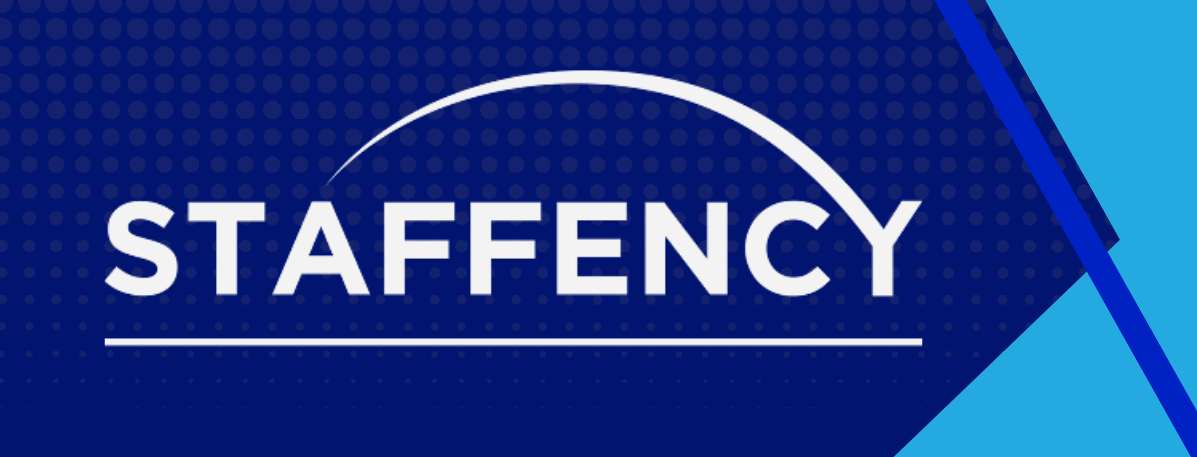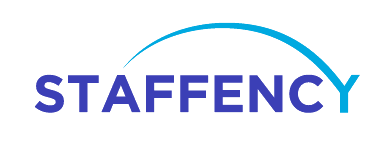
- The average hospital lost $7.1 million to turnover rates
- Current national hospital turnover rate is at 25.9%
As HR or hiring leaders can attest to within the healthcare industry, turnover is a top priority to address. Turnover, particularly among nurses, is a rising challenge stemming from pandemic-related burnout, increasing labor shortages, early retirements, and an influx of greater patients with high acuity needs.
Compared to other industries, healthcare-related turnover is extraordinarily high, approximately 30% higher than other industries faced with turnover. Current hospital turnover rates across the nation increased 6.4%, putting current turnover rate at 25.9% as of 2022. The average vacancy rate for nurses alone is thought to be 15% according to Becker’s Hospital 2022 CFO Report. This is high and directly hurts organizations and their employees.
Accelerated turnover rate has deep direct and indirect costly implications. Direct financial consequences of turnover have led to the loss of $7.1 million for the average hospital in 2021. Direct costs of turnover include an array of expenses from recruiting costs to training, benefits, termination expenses, and ultimately repeating the cycle with new candidates, creating a pricey cycle when turnover goes unmanaged. It was found that the average cost of turnover for a registered nurse was $40,038, meaning hospitals stand to lose between $3.6 – 6.5 million annually with greater turnover.
Indirect costs of turnover rates are equally detrimental to healthcare systems and their employees and can include decreased patient outcomes and satisfaction, decreased team morale, increased worker burnout, and damaged brand reputation. Many of these indirect costs of turnover further fuel turnover rates, creating an unsustainable, costly cycle.
Turnover is a persistent dilemma healthcare leaders are faced with, one that must be addressed in the coming years to create sustainable labor strategies that acquire the right people and help retain them. The most effective solutions organizations can utilize is to reexamine their workforce programs in order to optimize recruitment and retention efforts.
This blog takes a closer examination of both direct and indirect costs of turnover, and how crafting an effective recruitment and retention strategy can help healthcare organizations create a sustainable workforce program to reduce turnover and minimize the associated costs.
Why are people leaving?
Growing turnover results from a number of factors, many of which can be preventable, while other factors are tricky but not altogether unavoidable with the right strategy. Top reasons turnover rates are high among healthcare professionals include:
- Retirements
- Reduced employee wellbeing
- Inflexible work models
- Limited career advancement opportunities
- Poor culture fit
- Poor hiring and recruitment strategies
Retirements
With many nurses nearing retirement age, the healthcare workforce is experiencing valuable losses of experienced talent- talent not easily replaceable. The number of current retirements is outpacing the incoming inflow of nurse professionals entering the field, expanding an already inflated shortage crisis. Furthermore, throughout the pandemic, health facilities experienced increased early retirements due to workload demands, burnout, and safety concerns.
Reduced Employee Wellbeing
Demands from the pandemic in conjunction with growing labor shortages have greatly reduced employee wellbeing and morale, resulting in higher turnover rates. Healthcare employees are often faced with added workloads, burnout, and little resources. This has taken a toll in employee happiness, as well as emotional, physical, and mental wellbeing, leading many to leave employers in search of opportunities that prioritize workplace happiness and greater work life balance.
Inflexible Work Models
With limited staff on hand, having greater flexibility in regards to the type of work being done and scheduling is difficult to achieve. With greater workforce flexibility as a high priority among professionals today, many healthcare employees are seeking opportunities to perform the work they want, where they want, with the shifts they want.
Career Advancement
Among millennials and Gen Z health professionals, career advancement is a major contributor in retention. Many younger professionals are willing to invest in brands that offer opportunities to train, grow, and professionally advance their careers. Brands unable to offer future prospects for career development will often experience higher rates of disengagement and turnover.
Poor Culture Fit
Company culture is a growing area of concern for health systems. Poor management, feeling undervalued, and poor work life balance are major catalysts for healthcare employees to leave companies in search of brands that fit their values and promote a good company culture that values employees, promotes diversity, strengthens skillsets, and looks out for nurse wellbeing.
Poor hiring and recruitment strategies
Hiring just to hire has been a reactive approach, often necessary for facilities to meet labor demands since growing shortages have strained hospital staff. Poor recruitment tactics have led to overpayment of staff, hiring of unqualified individuals, and unoptimized hiring processes that lead to hiring staff with poor cultural fit or disengagement – all fueling turnover.

What are the direct and indirect costs of healthcare turnover?
Financial
As mentioned previously, turnover of a bedside registered nurse costs on average $40,038, meaning hospitals can potentially lose up to $6.5 million annually on nurse turnover. Hiring an employee is not a simple or quick process – it’s costly and time-consuming. Recruitment costs are expensive, and costs only increase the longer a position remains open. In fact, one study demonstrated that hiring a regular position takes an average of 42 days to fill (doubled if specialized), meaning increased expenses.
Added finances include screening costs such as background checks, drug tests, sign on bonuses, as well as onboarding and training costs – that’s a lot of investment in a single individual. Now imagine that person quits quickly thereafter, all investments are lost. The recruiting process must be started all over again, which includes added expenses and time.
Nurse and Patient Safety
Healthcare turnover leads to reduced available staff on hand, often times creating environments with inadequate staffing levels. Fewer staff means greater nurse-to-patient ratios, creating room for mistakes, errors, and medical negligence. In response to a lack of resources and inadequate staff, nurses are often forced to take on more tasks and safety workarounds to accomplish their workloads. Many workarounds can impact patient safety. In fact, studies consistently demonstrate the correlation between understaffing and increased instances of medical errors, increased mortality rates and greater infections.
Not only is patient safety jeopardized, nurse wellbeing is also jeopardized. Nurses are burdened with greater workloads that impact mental, physical, and emotional wellbeing. Negative patient outcomes can further affect nurse wellbeing and job perception. Many of these stressors further fuel turnover.
Team Morale
The greatest indirect cost the toll of turnover has on health systems is decreased team morale. Increased turnover and resulting staff shortages heavily affects core staff’s perception and trust in their employers and daily work. Burdened with overwhelming work, poor work-life balance, and diminished wellbeing, ongoing turnover can demotivate staff as a whole, reduce productivity and accelerate turnover rates.
Brand Reputation
Negative patient outcomes and dissatisfaction from a lack of quality care highly impacts organizations. With a greater emphasis on patient care, dissatisfaction leads to lack of trust and credibility, damaging brand credibility. This can affect how the public perceives your brand and those willing to seek your organization’s care. Furthermore, poor brand reputation affects hiring strategies, as healthcare professionals are seeking to secure employment with trusted brands.
Solutions
It’s imperative to reexamine current workforce strategies in order to overcome the costly consequences of turnover. Two important areas healthcare organizations are reexamining are recruitment tactics and retention strategies. Optimizing these areas can help bring on the right people and keep them.
1. Effective Recruitment
Effective recruitment processes help align the right people to the right position and reduces the likelihood that someone will abruptly quit. Two key features to effective recruitment strategies are having streamlined operations for optimal candidate experiences and hiring intentionally.
With a competitive landscape in sourcing talent, creating an optimal candidate experience is becoming important in attracting the right people. Poor communication and inefficient or time-consuming hiring processes can deter quality candidates from pursuing employment with brands. Healthcare organizations cannot afford to have subpar recruitment processes that indicate poor organization and communication.
Solution: Optimizing recruitment operations in today’s labor climate necessitates automation. Whether directly sourcing or using external staffing agencies, organizations need to be utilizing vendor management technology to automate important touchpoints throughout the recruitment lifecycle – it’s a standard most business operations are turning to in order to avoid inefficient hiring processes.
VMS solutions allow organizations to use a single platform to manage all recruitment efforts in a centralized location. Within a VMS, organizations can create and distribute job requisitions, match with candidates, conduct prescreening processes, access virtual interviews, automate compliance tracking, onboarding, communication and manage all candidate records within the platform. This helps create a consistent, reliable, and time-efficient process to create a seamless candidate experience. Organizations can directly invest in their own VMS to support their own staffing programs or partner with service providers that already use this to help strengthen their workforce programs.
Hiring with intention helps organizations invest in the right person. Many health facilities have hired individuals out of desperation that ended up not being the right fit, resulting in added turnover. Healthcare hiring leaders are well aware of the investment a single individual is. With an effective recruitment strategy, hiring teams will invest their time in proper prescreening, interviewing, and credentialing to determine expectations and a right fit. Those determined to be the right fit for the position and brand are further onboarded and trained to help orient candidates to company values, cultures, and job expectations. This can lead workers to becoming a long-lasting asset and employee. These important measures help facilities hire mindfully to reduce future turnover.
Solutions: For organizations conducting their own recruitment strategies, it’s important to have a strong sense of company values and brand to align the right candidate to company culture. Combining essential qualities important to your brand along with job descriptions serves as a template to screen, interview and evaluate candidates. If using VMS technology, relay these qualities in job requisitions and virtual interview prompts. For example, Staffency’s proprietary VMS, StaffBot, allows employers to write essential interview questions through its virtual interview features, allowing hiring leaders to evaluate candidates on questions most important.
If using external staffing agencies or service providers for recruitment needs, it’s important to partner with a provider that truly understands an organization’s core values and company culture to source candidates that will culturally fit. For external agencies that help conduct screening and interviewing, knowing what qualities are most important in a candidate will help save time and resources in finding compatible candidates.
2. Retention Strategies
Whereas effective recruitment tactics are the first part, the next step is retaining the talent you’ve sourced to minimize turnover. Implementing retention practices can be one of the most effective solutions in the battle of turnover and requires thoughtful and creative initiatives. Common strategies healthcare organizations are focusing on are:
- Reevaluating company culture
- Prioritizing wellbeing
- Improving communication
- Investing in training
- Creating flexibility
Organizations are looking inwards to reevaluate company culture, mission and values – and how these fundamental characteristics are exercised and aligned to employees. Creating a culture that values employees, creates safe work environments and fosters workplace happiness have greater success in creating loyalty and retention among employees.
Tip: For organizations utilizing external providers, ensure external agencies thoroughly understand your company values and culture goals to best align candidates with those who fit. Service providers can provide added support in helping build the right company culture your organization is striving for.
Prioritizing employee wellbeing is a necessary approach in eliminating turnover rates. Wellbeing programs to promote employee mental, emotional, and physical health are essential in helping employees manage stress and prevent exhaustion. Organizations are even developing plans alongside current employees to understand what changes employees are wanting.
Tip: Use external labor to cover shifts of core staff to promote paid time off or sick leave to help employee health, wellbeing and create a healthy work life balance.
Improving communication between employees can invaluably boost company culture and trust. Promoting communication and feedback allows employees to feel heard and valued for their concerns, while also allowing organizations to pinpoint areas to focus on and build a stronger work environment.
Tip: Use surveys to better understand employee engagement or satisfaction to help make organizational adjustments and create a strong work environment.
Organizations are realizing the value of onboarding and training, and its correlation to minimized turnover. Employees are increasingly valuing thorough onboarding and training to feel comfortable in their roles and integrate into the company environment. In fact, proper training often results in employees staying longer with organizations due to increased productivity, loyalty, and company understanding. Continuous training is also necessary as the newer workforce is more willing to stay with companies that offer career advancement opportunities.
Tip: Whether using service providers or using self-sourcing tools like vendor management systems, create a seamless onboarding and training program to provide candidates with an optimal experience. Automated training allows candidates and all hiring leaders to be aware and notified of trainings needed rather than having to manually check the status, send the trainings, and constantly communicate back-and-forth – creating a fragmentation in training and a poor experience.
Flexible scheduling is an essential asset in current workforce climates. Employees are increasingly expecting flexible schedules and this is no different in the healthcare sector. Healthcare professionals want greater flexibility in the type of work they do and the schedules they are working. Creating solutions to tackle this is essential in achieving employee satisfaction.
Tip: Use a healthy flow of contingent labor or float pools to tackle the schedules core staff aren’t wanting. This allows permanent employees to have greater control in their schedules and the work they want to do. Additionally, crafting schedules alongside employees has been beneficial in understanding employee wants and labor needs.
How can we help?
We know that organizations are looking for sustainable labor strategies to help secure quality talent with cost-effective solutions. Staffency provides a wide range of customizable workforce solutions to help meet your organization’s short-term and long-term labor needs. We help tackle several challenges current healthcare organizations face from shortages, to turnover, employee burnout, and boosting brand reputation by providing a healthy flow of contingent or permanent labor to help your facility succeed.
Request a complimentary consultation to help determine what strategy is best for your workforce program!
